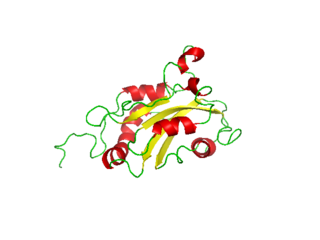| CFL2 | |||||||||||||||||||||||||||||||||||||||||||||||||||
|---|---|---|---|---|---|---|---|---|---|---|---|---|---|---|---|---|---|---|---|---|---|---|---|---|---|---|---|---|---|---|---|---|---|---|---|---|---|---|---|---|---|---|---|---|---|---|---|---|---|---|---|
 | |||||||||||||||||||||||||||||||||||||||||||||||||||
| Identifiers | |||||||||||||||||||||||||||||||||||||||||||||||||||
| Aliases | CFL2 , NEM7, cofilin 2 | ||||||||||||||||||||||||||||||||||||||||||||||||||
| External IDs | OMIM: 601443 MGI: 101763 HomoloGene: 129115 GeneCards: CFL2 | ||||||||||||||||||||||||||||||||||||||||||||||||||
| |||||||||||||||||||||||||||||||||||||||||||||||||||
| |||||||||||||||||||||||||||||||||||||||||||||||||||
| |||||||||||||||||||||||||||||||||||||||||||||||||||
| |||||||||||||||||||||||||||||||||||||||||||||||||||
| |||||||||||||||||||||||||||||||||||||||||||||||||||
| Wikidata | |||||||||||||||||||||||||||||||||||||||||||||||||||
| |||||||||||||||||||||||||||||||||||||||||||||||||||
Cofilin 2 (muscle) also known as CFL2 is a protein which in humans is encoded by the CFL2 gene. [5] [6]
| CFL2 | |||||||||||||||||||||||||||||||||||||||||||||||||||
|---|---|---|---|---|---|---|---|---|---|---|---|---|---|---|---|---|---|---|---|---|---|---|---|---|---|---|---|---|---|---|---|---|---|---|---|---|---|---|---|---|---|---|---|---|---|---|---|---|---|---|---|
 | |||||||||||||||||||||||||||||||||||||||||||||||||||
| Identifiers | |||||||||||||||||||||||||||||||||||||||||||||||||||
| Aliases | CFL2 , NEM7, cofilin 2 | ||||||||||||||||||||||||||||||||||||||||||||||||||
| External IDs | OMIM: 601443 MGI: 101763 HomoloGene: 129115 GeneCards: CFL2 | ||||||||||||||||||||||||||||||||||||||||||||||||||
| |||||||||||||||||||||||||||||||||||||||||||||||||||
| |||||||||||||||||||||||||||||||||||||||||||||||||||
| |||||||||||||||||||||||||||||||||||||||||||||||||||
| |||||||||||||||||||||||||||||||||||||||||||||||||||
| |||||||||||||||||||||||||||||||||||||||||||||||||||
| Wikidata | |||||||||||||||||||||||||||||||||||||||||||||||||||
| |||||||||||||||||||||||||||||||||||||||||||||||||||
Cofilin 2 (muscle) also known as CFL2 is a protein which in humans is encoded by the CFL2 gene. [5] [6]
Cofilin is a widely distributed intracellular actin-modulating protein that binds and depolymerizes filamentous F-actin and inhibits the polymerization of monomeric G-actin in a pH-dependent manner. [6] Cofilin-2 is a member of the AC group of proteins that also includes cofilin-1 (CFL1) and destrin (DSTN), all of which regulate actin-filament dynamics. [7] [8] The CFL2 gene encodes a skeletal muscle-specific isoform [9] localized to the thin filaments, where it exerts its effect on actin, in part through interactions with tropomyosins. [10]
Mutations in the CFL2 gene are associated with nemaline myopathy. Deficiency of cofilin-2 may result in reduced depolymerization of actin filaments, causing their accumulation in nemaline bodies, minicores, and, possibly concentric laminated bodies. [11]

Actin is a family of globular multi-functional proteins that form microfilaments in the cytoskeleton, and the thin filaments in muscle fibrils. It is found in essentially all eukaryotic cells, where it may be present at a concentration of over 100 μM; its mass is roughly 42 kDa, with a diameter of 4 to 7 nm.

Tropomyosin is a two-stranded alpha-helical, coiled coil protein found in many animal and fungal cells. In animals, it is an important component of the muscular system which works in conjunction with troponin to regulate muscle contraction. It is present in smooth and striated muscle tissues, which can be found in various organs and body systems, including the heart, blood vessels, respiratory system, and digestive system. In fungi, tropomyosin is found in cell walls and helps maintain the structural integrity of cells.

Nebulin is an actin-binding protein which is localized to the thin filament of the sarcomeres in skeletal muscle. Nebulin in humans is coded for by the gene NEB. It is a very large protein and binds as many as 200 actin monomers. Because its length is proportional to thin filament length, it is believed that nebulin acts as a thin filament "ruler" and regulates thin filament length during sarcomere assembly and acts as the coats the actin filament. Other functions of nebulin, such as a role in cell signaling, remain uncertain.

ADF/cofilin is a family of actin-binding proteins associated with the rapid depolymerization of actin microfilaments that give actin its characteristic dynamic instability. This dynamic instability is central to actin's role in muscle contraction, cell motility and transcription regulation.

Cofilin 1 , also known as CFL1, is a human gene, part of the ADF/cofilin family.

Destrin or DSTN is a protein which in humans is encoded by the DSTN gene. Destrin is a component protein in microfilaments.

LIM domain kinase 1 is an enzyme that in humans is encoded by the LIMK1 gene.

Tropomyosin alpha-3 chain is a protein that in humans is encoded by the TPM3 gene.

Alpha-actinin-4 is a protein that in humans is encoded by the ACTN4 gene.

β-Tropomyosin, also known as tropomyosin beta chain is a protein that in humans is encoded by the TPM2 gene. β-tropomyosin is striated muscle-specific coiled coil dimer that functions to stabilize actin filaments and regulate muscle contraction.

F-actin-capping protein subunit alpha-1 is a protein that in humans is encoded by the CAPZA1 gene.

LIM domain and actin-binding protein 1 is a protein that in humans is encoded by the LIMA1 gene.

For the SSH-1 protocol, see Secure Shell#Version 1

Actin filament-associated protein 1 is a protein that in humans is encoded by the AFAP1 gene.

Protein phosphatase Slingshot homolog 2 is an enzyme that in humans is encoded by the SSH2 gene.

Protein phosphatase Slingshot homolog 3 is an enzyme that in humans is encoded by the SSH3 gene.

Leiomodin-3 is a protein that in humans is encoded by the LMOD3 gene. Leiomodin-3 is especially present at the pointed end of muscle thin filaments.

Twinfilin-1 is a protein that in humans is encoded by the TWF1 gene. This gene encodes twinfilin, an actin monomer-binding protein conserved from yeast to mammals. Studies of the mouse counterpart suggest that this protein may be an actin monomer-binding protein, and its localization to cortical G-actin-rich structures may be regulated by the small GTPase RAC1.

Tropomodulin 4 (muscle) also known as TMOD4 is a protein which in humans is encoded by the TMOD4 gene.

In molecular biology, ADF-H domain is an approximately 150 amino acid motif that is present in three phylogenetically distinct classes of eukaryotic actin-binding proteins.
This article incorporates text from the United States National Library of Medicine, which is in the public domain.